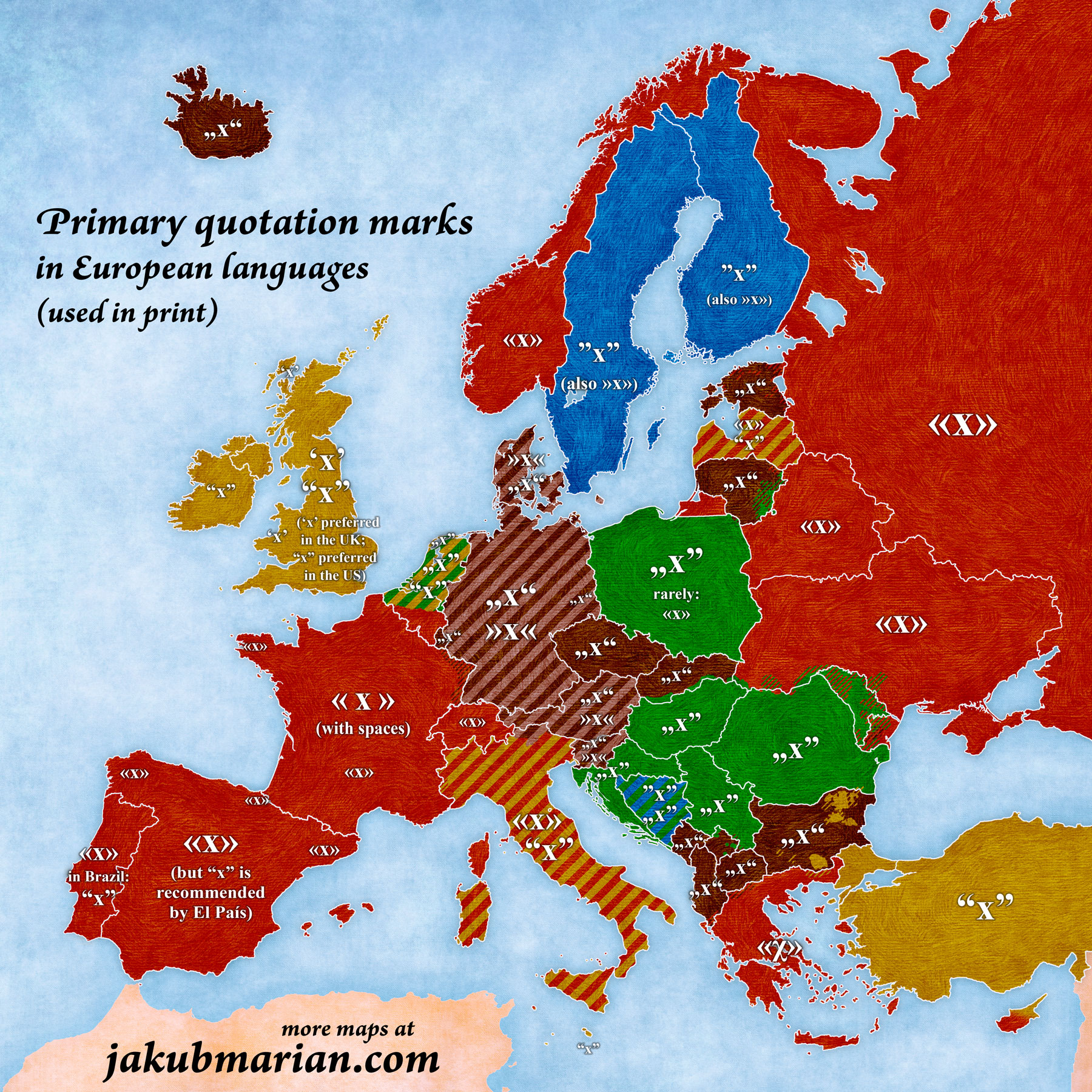We are all familiar with English quotation marks: “these” (double) and ‘these’ (single). The American style (and the prevalent style in the UK up until the beginning of the 20th century) prescribes double quotation marks for non-nested quotations, whereas contemporary British publishers lean towards single quotation marks (where single quotation marks, also called inverted commas, are used almost exclusively in fiction).
Nevertheless, the differences between American English and British English, as interesting as they may be, are not the topic of this article. There are five main types of quotation marks, which could be called English, French, German, Polish, and Swedish, represented by different colours on the map below:

The English style, based on the 66 and 99 shapes (but usually realized as "straight quotation marks"), was once quite rare, but it is now widespread on the Internet, even in languages that prescribe different shapes. This is due to the fact that many keyboard layouts do not provide the local quotation marks.
This practice has become especially common in Italy and the Netherlands, where the English style is common even in print media. Spain is likely going to follow suit, since the English style is recommended by El País, the second most circulated Spanish newspaper. In most other countries, the English style is still considered bad typography (but commonly used on blogs and forums).
Quotation marks are not always language-specific and may differ between countries speaking the same language. For instance, «angle quotes» (guillemets) are used for all four official languages of Switzerland, including German, even though a different style is used in Germany and Austria.
 Tip: Are you a non-native English speaker? I have just finished creating a
Tip: Are you a non-native English speaker? I have just finished creating a  Web App
Web App
